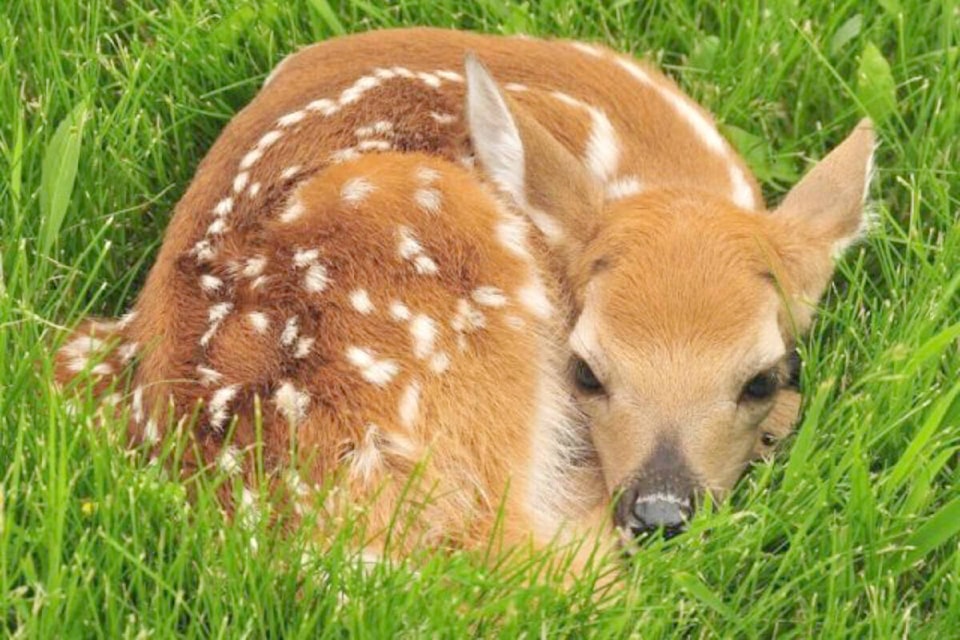If you find a fawn on its own, what would you do?
According to at least one B.C. wildlife centre you say: “It’s fawn season — leave them where they lie.”
Spring is when fawns begin to arrive across the province. Unless they have a life-threatening injury or you witness that the mother, is dead, the Vancouver Island’s North Island Wildlife Rescue Centre advises the public to just leave the fawns alone
According to centre officials, newborn fawns will drop to the ground in response to a threat (such as dogs, cougars and humans) or while their mother goes off to forage. As fawns do not have a scent, the doe will leave them where she thinks it is safe, in tall grass or even a backyard. This adaptation allows for the fawn to be safe from predators because if the doe stayed close, the predator would smell her and attack the fawn.
The public should resist picking them up and assume they have been abandoned as 90 per cent of the time, that is not the case. And if you find a fawn alone and unsure of what to do, the public is urged to call the centre and staff will guide you.
READ MORE: ‘Don’t be a fawn-napper’: BC Conservation reminds public to leave baby deer alone
If children have brought it home, the centre advises to take the fawn back to where it was found as the mother will return. She is full of milk, and the fawn will be hungry. It has been documented that a fawn taken from its mother can be successfully returned even after 48 hours.
When you find a fawn laying out flat on the side or in the middle of the road, stop and gently herd them off into the bush or ditch to prevent motorists from stopping or even hitting the fawn,” the release states “The mother and fawn may have become separated when crossing the road and she is probably watching you. The fawns tend to lay flat instinctively, hoping you will go away. “
If it is necessary to bring the fawn to your local wildlife centre, do not feed it because an improper diet may cause more harm than good.
Fawns are cute, but the centre advises that the public must always curb that notion to keep and raise them. They grow up to become 48 to 65 kilograms adults with hooves strong enough to do some damage.
“Any young animal can become imprinted on humans and cause problems. If a deer is not afraid of humans, it is an easy target for cars and hunters. Also, having wildlife in your possession is illegal without a permit from the Ministry of Environment.”
